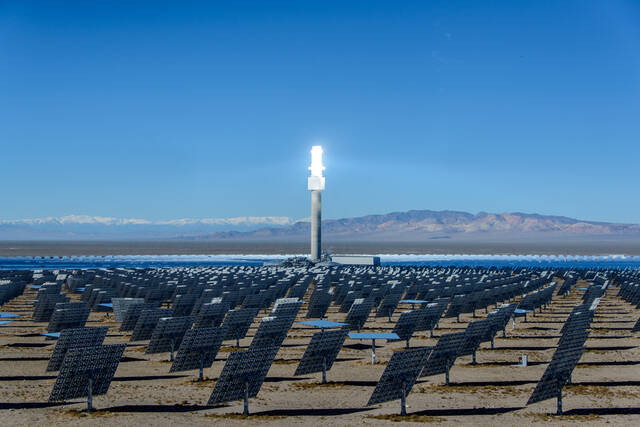COMMENTARY: Biden ‘green’ mandates destructive, not so green
The Biden energy transformation, joined by some states, is taking the United States dangerously close to a collapse of our electric grid.
The White House is implementing mandates that force Americans to convert from consumer appliances that rely on fossil fuels — such as natural gas furnaces, water heaters and stoves — to all-electric models. They’re likewise eliminating gasoline and diesel cars, trains, pickups and long-haul semitrailers and imposing models powered by batteries.
Such radical initiatives are sure to drive electricity demand into the stratosphere. At the same time, other regulations seemed determined to choke off energy production by forcing reliable coal, gas, hydro and even nuclear power plants to close. Worse, they are replacing this proven, reliable 24/7/365 energy with expensive, intermittent, weather-dependent wind and solar projects.
The president’s energy policies are doubling, tripling and quadrupling U.S. electricity demand while simultaneously slashing power generation and supply. They’re replacing reliable power plants with “renewable energy” systems that generate electricity only 30 percent to 40 percent of the year.
There are many problems with this approach to energy policy. Some are obvious, such as the tab for this “green transformation,” which will probably run well in excess of $100 trillion.
But others are not so evident. They involve Mother Nature.
Recent weather events underscore one such unanticipated problem that politicians and bureaucrats didn’t expect.
In March, severe thunderstorms slammed golf-ball-size hailstones into 3,500 acres (5.5 square miles) of solar panels southwest of Houston. Before the storms hit, the panels could generate enough electricity for 62,000 homes for eight or nine hours on a hot sunny day. Now, the cracked and shattered panels will produce a fraction of that.
They can’t be recycled. Thousands will end up in landfills — but not just any landfills. The panels contain heavy metals and other toxic materials that create risks of surface and groundwater contamination if not disposed of properly.
So where will we put all that solar trash? In whose backyards? Who will haul it to those dumps? How much will disposal cost — on top of their manufacturing and installation costs? Who pays? Solar companies? Insurance companies? Or taxpayers, ratepayers and consumers?
And that’s just one solar installation. (Coal, gas, nuclear and hydroelectric facilities would be unscathed.)
The Interior Department wants to speed up the installation of solar panels on 22 million acres of public lands in 11 Western states. That’s nearly the size of Indiana — including many gorgeous scenic and wildlife areas.
At just 1,000 photovoltaic panels per acre, that’s 22 billion panels. And that doesn’t include countless panels on rooftops or state and private lands. Even if they’re not shattered by hailstorms, they last only 20, 25 or 30 years.
Wind turbines have the same problem. Onshore turbines last 20 to 25 years; ocean-based turbines even less. Some parts can be recycled or reused. However, the blades can’t be recycled, shredded or incinerated. They must be cut into huge segments and landfilled: 300,000 gigantic blades for 100,000 turbines.
Worse, try to imagine the logistics of retrieving, hauling and disposing of thousands of ginormous offshore turbines, nacelles, generators and blades that have been worn out by salt spray or battered, broken and destroyed by storms and hurricanes miles off our coasts.
Many truck, train and automotive batteries — plus huge grid-scale backup batteries weighing up to five tons or more — will also be destined for landfills. They will create chemical-fire hazards while in use and while being transported from factories to landfills or recycling centers after they’ve been disposed.
Filling the Grand Canyon with worn-out and obsolete solar panels, turbine blades, dangerous vehicle and grid batteries, and other “renewable” energy junk wouldn’t take long.
Ultimately, tens of thousands of wind turbines, billions of solar panels and endless new transmission lines will sprawl across millions of acres of America’s croplands, wildlife habitats and scenic areas. Keeping thousands of gigantic grid-scale backup batteries charged for windless/sunless periods will require more windmills and photovoltaic panels.
And for what end? So America can limit its carbon emissions — only to have those costly reductions rendered irrelevant by China and India’s explosive development of fossil fuels, anyway?
If we really want to make an environmental statement, rather than focus on carbon emissions, Congress should, it is hoped, shatter the not-so-green energy transformation plans before Mother Nature does it again.
Craig Rucker is president of the Committee for a Constructive Tomorrow. He wrote this for InsideSources.com.

















